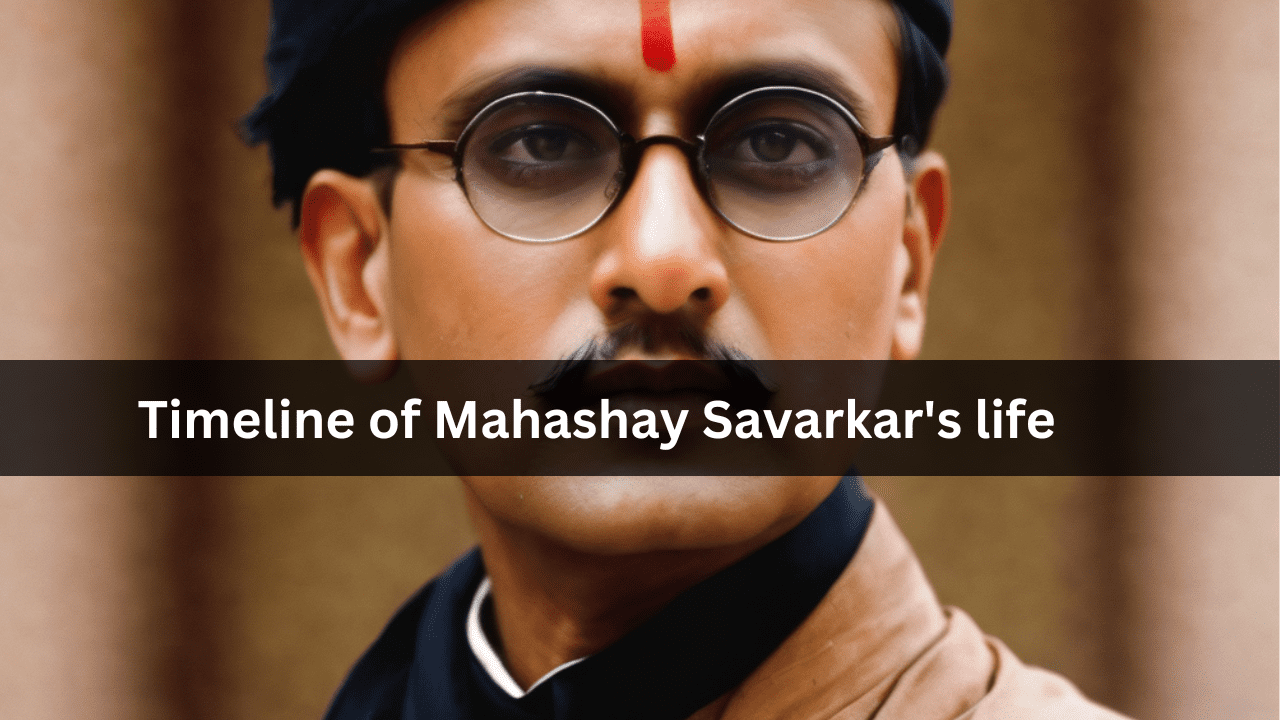1883: Birth of Vinayak Damodar Savarkar in Bhagur, Maharashtra, India.
1896: Savarkar joins the Sarvajanik Sabha, a political organization that advocates for Indian self-rule.
1904: Savarkar is arrested by the British colonial authorities for his involvement in the activities of the Abhinav Bharat Society, a revolutionary organization that seeks to overthrow British rule through armed struggle.
1905: Varma founded the India House in London in 1905, which was initially a hall for Indian students to meet and exchange ideas. However, it soon became a center for radical Indian nationalism, and Varma used it to publish the journal “The Indian Sociologist,” which was a key platform for revolutionary Indian nationalists.
1909: Savarkar is sentenced to 50 years of transportation to the Andaman and Nicobar Islands for his involvement in the Abhinav Bharat Society.
Vinayak Damodar Savarkar published his book “1857: The First Indian War of Independence” in 1909. The book is considered a landmark in Indian nationalist literature, and it has been translated into numerous languages.
In the book, Savarkar argues that the Indian Rebellion of 1857 was not a mere mutiny, but a full-fledged war of independence against British rule. He traces the roots of the rebellion to the East India Company’s policies of religious discrimination and economic exploitation. He also highlights the role of Indian princes and sepoys in the rebellion.
Savarkar’s book was a major challenge to the British colonial narrative, which portrayed the rebellion as a minor uprising. It helped to inspire a new generation of Indian nationalists who were determined to overthrow British rule.
1910: Savarkar’s sentence is commuted to 10 years of rigorous imprisonment.
1914: Savarkar is released from prison and exiled to Rangoon, Burma.
1921: Savarkar returns to India after the Government of India Act is passed, granting more self-governance to India.
1924: Savarkar starts the Hindu Mahasabha, a political organization that advocates for Hindu nationalism and a Hindu Raj (Hindu rule).
1925: Savarkar publishes his book “Hindutva: Who Is a Hindu?”, which outlines his philosophy of Hindu nationalism.
1932: Savarkar is arrested for his involvement in the Hindu Mahasabha’s activities and is sentenced to two years of imprisonment.
1937: Savarkar is released from prison and continues to write and advocate for Hindu nationalism.
1946: Savarkar attends the All India Hindu Mahasabha session in Calcutta, where he makes a speech calling for the creation of a Hindu state.
1947: India gains independence from British rule, and Pakistan is created as a separate Muslim state.
1966: Vinayak Damodar Savarkar dies in Bombay, India.
Legacy: Savarkar is one of Most Nationalist figures in Indian history. He is revered by as a nationalist hero, while others view him as a Hindu supremacist and a terrorist. His legacy continues to be celebrated today.
Here are some of Savarkar’s key contributions to Indian society:
-
Founding of the Hindu Mahasabha: The Hindu Mahasabha, which Savarkar founded in 1924, is one of the oldest and most prominent Hindu nationalist organizations in India.
-
Hindutva: Savarkar’s book “Hindutva: Who Is a Hindu?” has been highly influential in shaping the ideology of Hindu nationalism.
-
Role in the Indian independence movement: Savarkar was a prominent figure in the Indian independence movement, and he played a key role in the Hindu Mahasabha’s efforts to overthrow British rule.
-
Impact on Indian politics: Savarkar’s ideas have had a significant impact on Indian politics, and his legacy continues to influence Hindu nationalist movements in India today.

